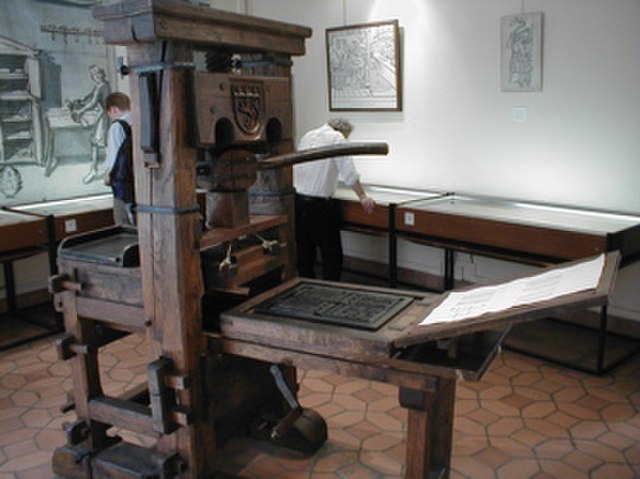The German Renaissance, part of the Northern Renaissance, was a cultural and artistic movement that spread among German thinkers in the 15th and 16th centuries, which developed from the Italian Renaissance. Many areas of the arts and sciences were influenced, notably by the spread of Renaissance humanism to the various German states and principalities. There were many advances made in the fields of architecture, the arts, and the sciences. Germany produced two developments that were to dominate the 16th century all over Europe: printing and the Protestant Reformation.
Portrait of Emperor Maximilian I (reigned: 1493–1519), the first Renaissance monarch of the Holy Roman Empire, by Albrecht Dürer, 1519
First page of a copy of the Gutenberg Bible, now in Texas
The Heller altar by Albrecht Dürer
Melencolia I, 1514, engraving by Albrecht Dürer
The Northern Renaissance was the Renaissance that occurred in Europe north of the Alps. From the last years of the 15th century, its Renaissance spread around Europe. Called the Northern Renaissance because it occurred north of the Italian Renaissance, this period became the German, French, English, Low Countries and Polish Renaissances, and in turn created other national and localized movements, each with different attributes.
Jan van Eyck, The Arnolfini Portrait, 1434, National Gallery, London
The Adoration of the Magi in the snow, Pieter Brueghel the Younger, 1584–1638
Reproduction of Johannes Gutenberg-era Press on display at the Printing History Museum in Lyon, France.
The Ghent Altarpiece (interior view) by Hubert and Jan van Eyck, completed 1432. Saint Bavo Cathedral, Ghent, Belgium.








